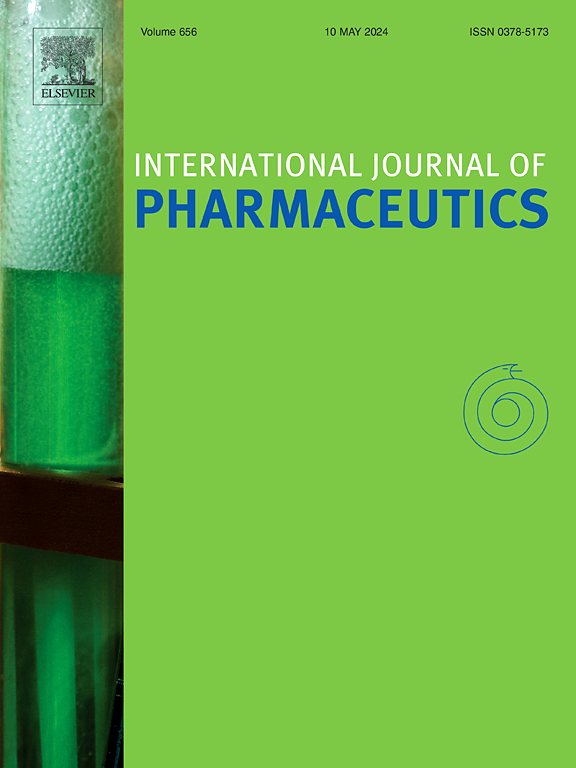A novel temperature-controlled media milling device to produce drug nanocrystals at the laboratory scale
IF 5.3
2区 医学
Q1 PHARMACOLOGY & PHARMACY
引用次数: 0
Abstract
Poor aqueous solubility of preexisting and emerging drug molecules is a common issue faced in the field of pharmaceutics. To address this, particle size reduction techniques, including drug micro- and nanonisation have been widely employed. Nanocrystals (NCs), drug particles with particle sizes below 1 µm, offer high drug content, improved dissolution, and long-acting capabilities. Media milling is the most used method to prepare NCs using of-the-shelf machinery, both at the laboratory and industrial scales. However, early NCs development, especially when limited amounts of the active are available, require the use of milligram-scale media milling. This study introduces a novel mini-scale milling device (Mini-mill) that incorporates temperature control through a water-cooled jacket. The device was used to produce NCs of three model hydrophobic drugs, itraconazole, ivermectin and curcumin, with lowest particle sizes of 162.5 ± 0.4 nm, 178 ± 2 nm, and 116.7 ± 0.7 nm, respectively. Precise control of milling temperature was achieved at 15, 45, and 75°C, with drug dependent particle size reduction trends, with no adverse effects on the milling materials or polymorphic changes in the NCs, as confirmed by calorimetric analysis. Finally, a scale-up feasibility study was carried out in a lab-scale NanoDisp®, confirming that the novel Mini-mills are a material-efficient tool for early formulation development, with potential for scale-up to commercial mills.
用于在实验室规模生产药物纳米晶体的新型温控介质研磨装置。
现有和新出现的药物分子水溶性差是制药领域面临的一个共同问题。为解决这一问题,包括药物微纳米化在内的粒径缩小技术已被广泛采用。纳米晶体(NC)是粒径小于 1 微米的药物颗粒,具有药物含量高、溶解性好和长效等特点。介质研磨是使用现成机器制备 NCs 的最常用方法,无论是在实验室还是在工业规模上都是如此。然而,NCs 的早期开发,尤其是在活性物质数量有限的情况下,需要使用毫克级介质研磨。本研究介绍了一种新型微型研磨设备(Mini-mill),该设备通过水冷夹套进行温度控制。该装置用于生产三种疏水性药物(伊曲康唑、伊维菌素和姜黄素)的 NCs,最低粒径分别为 162.5 ± 0.4 nm、178 ± 2 nm 和 116.7 ± 0.7 nm。制粉温度精确控制在 15、45 和 75°C,粒度减小趋势与药物有关,对制粉材料没有不利影响,NC 也没有发生多晶型变化,这一点已得到量热分析的证实。最后,在实验室规模的 NanoDisp® 中进行了放大可行性研究,证实新型迷你研磨机是一种用于早期制剂开发的材料高效工具,具有放大到商用研磨机的潜力。
本文章由计算机程序翻译,如有差异,请以英文原文为准。
求助全文
约1分钟内获得全文
求助全文
来源期刊
CiteScore
10.70
自引率
8.60%
发文量
951
审稿时长
72 days
期刊介绍:
The International Journal of Pharmaceutics is the third most cited journal in the "Pharmacy & Pharmacology" category out of 366 journals, being the true home for pharmaceutical scientists concerned with the physical, chemical and biological properties of devices and delivery systems for drugs, vaccines and biologicals, including their design, manufacture and evaluation. This includes evaluation of the properties of drugs, excipients such as surfactants and polymers and novel materials. The journal has special sections on pharmaceutical nanotechnology and personalized medicines, and publishes research papers, reviews, commentaries and letters to the editor as well as special issues.

 求助内容:
求助内容: 应助结果提醒方式:
应助结果提醒方式:


